Packing for your ski trip can be both a hassle and exciting. Days spent charging the mountain, breathing the crisp mountain air. Nights spent relaxing in a hot tub and eating delicious local food. But organizing and condensing everything you think you and your family might need can feel overwhelming.
Don’t worry. As a local Colorado ski family that travels the country in search of powder, we’ve got you covered!
I’ve compiled a list of everything (and I mean EVERYTHING) you need to pack for your family’s next ski trip. Some of it’s obvious, like gloves andsnow boots; other items are not as obvious. If this is your family’s first ski vacay, I’ve included information to help you decide what to rent and/or buy. It’s all about making this the best trip ever, without breaking the bank and adding financial stress to what’s supposed to be a wild, yet stress-free skit trip!
After this guide, the only thing you will have to use your brain cells for is figuring out where to go, where to stay and what to eat! And you can rest easy knowing this post is unsponsored (short of a link or two to genuine products we love) so we aren’t blogging to simply push a product, like most big blog sites. Instead, we are legitimately trying to help! Whoa, right?
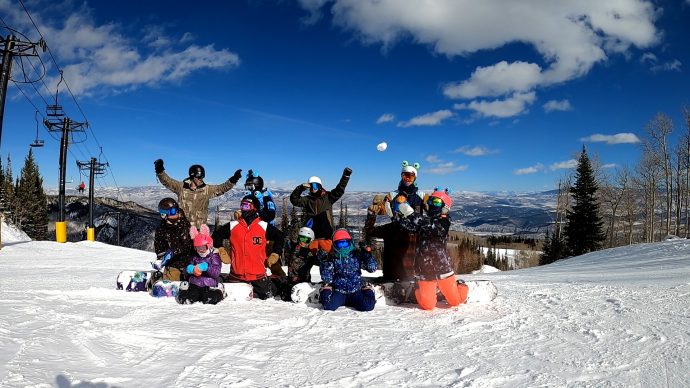
Table of Contents
Travel Things to Have on Hand (flying or driving)
- I.D.
- Confirmation Numbers/ Itinerary
- Credit Cards
- Health/Auto Insurance Cards (Take photos)
- Ski Passes – Buy in advance and find discounted tickets!
- Entertainment for kids – electronics, books, etc
- Charging cords
- Camera/ Phone
- Snacks, Snacks, and more Snacks
Ski/Snowboarding Gear To Pack
- Helmet – Don’t go without one!
- Goggles
- Neck Gaitor
- Waterproof Ski/Boarding Pants
- Waterproof Ski/Boarding Jacket
- Waterproof Ski/Boarding Mittens
- Layers
- Ski Socks
- Ski/Boarding Boots – Good brands: Solomon, K2, Burton … price varies greatly.
- Hand/Toe Warmers – These are priceless for those frigid days, they help ya keep going longer!
- Ear Buds – If you are like me, you love a good playlist while you are shredding the mountain!
- Phoozy Insulated Phone Case – Extends Battery Life up to 4X!
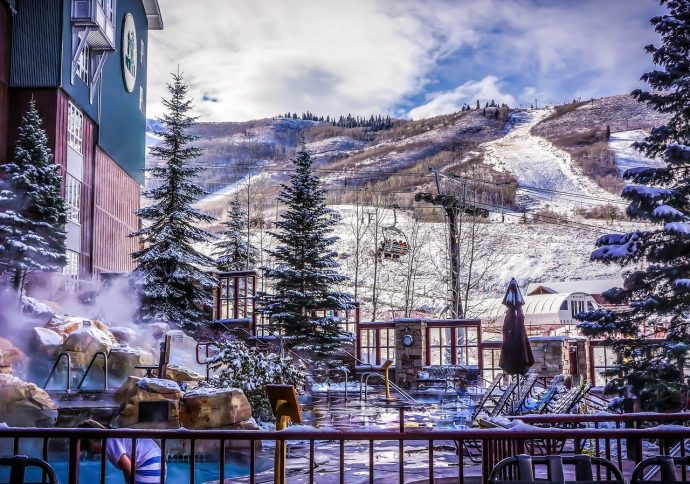
Tips For Gear
Whether you are new to skiing and snowboarding or are a veteran, there are some key tips that keep the choices for what to buy in check.
Helmets
Most resorts do not require helmets, but you are crazy if you don’t wear one, and please in the name of all that’s holy, make your kids wear them! Helmets save lives, period. Whenever we see someone on the mountain not wearing a helmet we immediately assume they don’t push themselves.
Now that that PSA is over with, when buying a helmet, comfort is key. I would never rent a helmet as they ought to be replaced if they have ever been involved in a serious crash, and you just don’t know. If you are buying a helmet in the US at a minimum, it ought to have an ASTM sticker on it. In Europe it will have a CE EN sticker. And, know that while helmets do save lives, they are not 100%. Ski and board responsibly.
KelloggShow Pick: We use these helmets.
Goggles
There are two main types of lens shapes; cylindrical and spherical.
Cylindrical lenses are vertically flat and horizontally curved to wrap around your face. Cylindrical goggles offer good protection and are typically the most affordable option.
Spherical lenses are curved vertically and horizontally – the ones with the bubbled look. The extra curvature enhances peripheral vision and minimizes distortion and glare.
The goggle lens is designed with a specific color and darkness known as Visible Light Transmission (VLT). Lighter tinted lenses have a higher VLT, best for cloudy days, while darker tinted lenses have a lower VLT, which is great for sunny days. Buy a pair of goggles that comes with both light and dark tinted lenses!
KelloggShow Pick: We use these or these. Both are great, the Zionor’s are way cheaper, and just as good. I think Susie is the only one with Smith’s.
Neck Gaitor
A must-have for those over the top cold days! It covers your neck and can be pulled up over your nose offereing protection from the elements.
KelloggShow Pick: Something like this works.
Pants and Jackets and Layers
Jackets are either a shell or insulated. The insulation is typically measured in grams; higher gram amounts equates to increased warmth. A nice rule is anything under 60 grams is lightly insulated and good for mild conditions, while anything over 100 grams are designed for extreme weather conditions.
The waterproof rating is arguably the most important attribute, as this prevents water from penetrating your shell. Usually, ski and snowboard jackets range from 5,000 to 10,000 mm. We recommend the lowest you go is 5,000 mm, especially if you typically spend most of the day outdoors. If you are skiing or boarding in wetter climates, you should look to for a higher rating, maybe around the 15,000 – 20,000 mm range.
Breathability is also important. Basically, breathability refers to allowing your sweat and moisture to escape from inside your jacket through the pores of the shell lining, maintaining your warmth. The recommendations are that if you are chill, a breathability scale around 5,000-10,000 grams will do the trick. If you are more aggressive and don’t take many breaks, then you may need a rating closer to 15,000 grams. Once again, the higher the rating the more expensive the jacket.
KelloggShow Pick: For Layers – this site has mind blowing deals ALL THE TIME!!
Ski/Boarding Socks
I highly recommend buying socks made with Merino Wool, it’s breathable and retains it’s warmth when wet. Thin, lightly cushioned, over calf socks are my goto.
KelloggShow Pick: Brands like Smartwool won’t steer you wrong.
Gloves and Mittens
I am unapologetically a mitten girl. Mittens are simply the warmer option to choose from. If you struggle with cold hands and fingers or ski or ride in really cold conditions, mittens are my recommended option. Also make sure your hand coverings are waterproof.
KelloggShow Pick: Pretty much we ALL use these… cheap and fully functioning pair.
Boots
Comfort above all, obviously, but flex is something every skiier and snowboarder knows to consider. As a general rule of thumb the more flexible the boot, the better for beginners and the more stiff the boot the more advanced the rider. Then boots are often made for specific skiing and riding.
- All Mountain Boots – These are all-purpose skis. They are designed to excel on all areas of the mountain, and the majority of the boots you see are this type.
- Freestyle Boots – Freestyle boots are made for tricks and jumps, but these also can vary in flex. Freestyle boots for half pipes and jibbing generally carry a mild stiffness so there is some flexibility for landings; whereas stiffer models are better for high speed long jumps.
- Racing Boots – As you can imagine, these boots are built for speed. Usually the stiffest boots you can buy, racing boots provide maximum response and control. Your toes are as snug as humanly possible, so you often sacrifice comfort for performance with racing boots.
Hand and Toe Warmers
Don’t leave home without them. They are like gold on the particularly cold days!
KelloggShow Pick: Hand/Toe Warmers
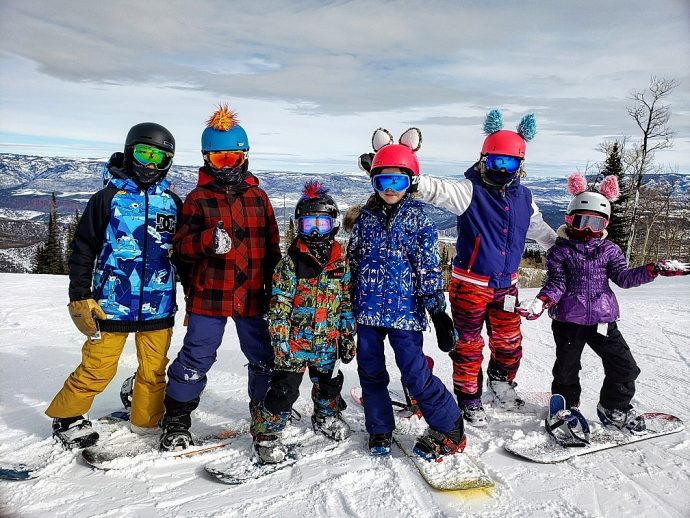
Additional Gear To Enhance Your Ski Vacation
Above you read about the absolute basics, the things you actually cannot live without when skiing or riding. Below you will behold those items that make the experience just a tad bit better, and more enjoyable, they aren’t necessary, but they are handy.
Hydration
Drinking lots of water and staying hydrated is a great contributor to our health. It is also key to preventing altitude sickness. The general rule of thumb is about 67 ozs of water daily. That’s hard to do when you are on the mountain all day, which is why my husband and I each carry a CamelBak for myself and my family when we hit the mountain (daily).
KelloggShow Pick: CamelBack
Pain Killers
Not gonna lie, maybe you imbibed in a few too many adult drinks, or you aren’t drinking enough water, or the altitude is getting to you, or the sun or the excitement, or your knee … I don’t know, but Advil and Tylenol are a great thing to have with you. At the resort, you will pay comparable to hospital prices for two tiny pills.
Elevation Sickness Cures
Altitude sickness is basically a lack of oxygen due to high elevations – it affects our bodies around 8,000′. Colorado is home to 5 of the highest ski resorts in the USA: Loveland, Breckenridge, Telluride, & Snowmass. We are well acclimated here. Symptoms set in from between 6-24 hours upon arrival at altitude. Symptoms are typically headache, nausea, dizziness, confusion, fatigue, and disturbed sleep. In dry climates, llike Colorado and UT, you can add extreme thirst to the list. Ibuprofen works, staying hydrated helps, and there are homeopathic pills at our local pharmacy that are bomber, but I can’t find them anywhere else. As such, I have no recommendations, but do some research — altitude sickness can last for up to 3 days! There are supplements you can purchase and have on hand, be sure to ask your doctor.
Duct Tape
I know, I know, but I also KNOW. We log a lot of days on the mountain, so we actually bring tools (to fix our boards) and duct tape for when a mitten rips or the BOA on a boot tears, or … I mean there are a ton of uses for duct tape, chances are you will find a use for it.
My favorite is Gorilla Tape! They sent us some samples and I’ve never looked back!
Entertainment for Littles
If you are skiing or riding with young kids chances are they will tire. When this happens, having books, coloring books, cards, even the dreaded electronics can help them pass the time. And don’t forget, entertainment for mom and/or dad.
Ski/Board Lock
I hate to say it, but resorts are rife with thieves. We had a brand new board stolen and that is simply the worst feeling, so we protect our gear with a lock!
KelloggShow Pick: This is what we own, I don’t love it or hate it, but it was cheap.
Lip Balm & Sunscreen
You will get burned and your lips will fry and freeze. Skiing and snowboarding is rough not only on your muscles, but on your body and skin as well. Throw your faves in your CamelBak and you’ll be set.
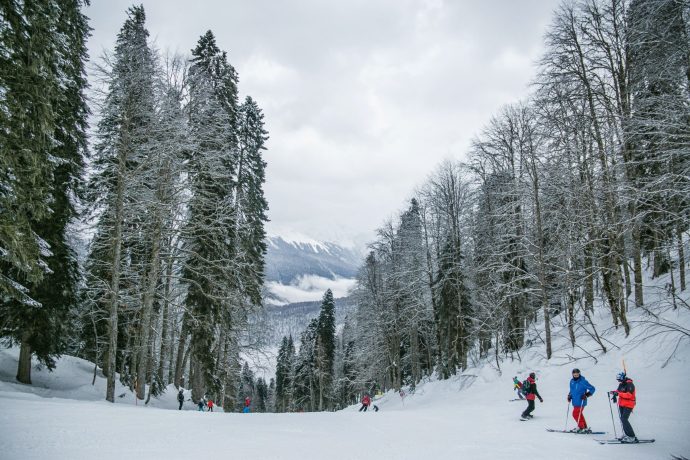
Off the Mountain Gear for Your Epic Ski Vacation
Yep, there is life, for most, after a full day or skiing or boarding. Most resorts are pedestrian friendly and are entire cities within themselves. That is unless you are choosing some of our favotire resorts, you know the uncrowded resorts. Here are the essentials for non-mountain activities.
Shoes
After a day of epic skiing, you’ll likely want to walk to dinner and cocktails. You’ll need footwear that keeps you warm and dry, even more important though are shoes that offer good traction on slippery surfaces. Any shoe will do in most resort towns, unless of course you plan on dining at swanky restaurants, you can pack a pair of hiking boots and call it a day!
KelloggShow pick: Susie: I love these Oboz. Dan likes these: Oboz. As for kids: Whatever we find on sale. They grow out of everything to fast.
Clothing
When you’re spending time outside in cold climates, layering is key. When it’s time to segue to après-ski, shed all your bulky layers for cozy sweaters, comfy pants & leggings, warm flannels and tailored hoodies. Comfort is the name of the game and the vast majority of resort towns are super laid back when it comes to style.
Chill Time
After many days of going hard on the mountain, then going out for dinner, cocktails and maybe a little (or a lot) nightlife, you might find you want a night of delivery and chill. I know that’s how I feel one night in the middle of a week vacation, for sure. I don’t want to go through the rigmarole of getting ready to go out. For this night (or two or whatever) bring…
- Book
- Kindle
- Swimsuit
- Headphones
- Playing Cards
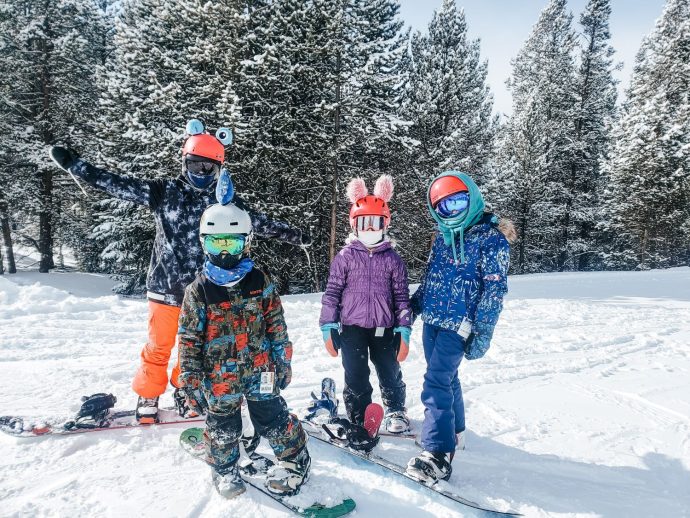
Toiletries
This is the part of the list I always forget! I’m so focused on getting the gear, that I ultimately forget a toothbrush or toothpaste. Following you will find my own goto list for packing regardless of where we are heading!
- Saline Nose Spray (dry climates, this helps us on the daily)
- Deodorant
- Hairbrush
- Hair Ties (braids rock under helmets)
- Tylenol/Advil/Excedrin
- Sunscreen (those goggle tan lines are legit)
- Chapstick with SPF
- Lotion – Your skin will be dry
- Bag Balm
- Shampoo (Complimentary Bottles are too small)
- Razor
- Nail Clippers & File
- Arnica Cream
- Mini First Aid Kit (bandaids, pain relief, antibiotic ointment, etc)
- Medications
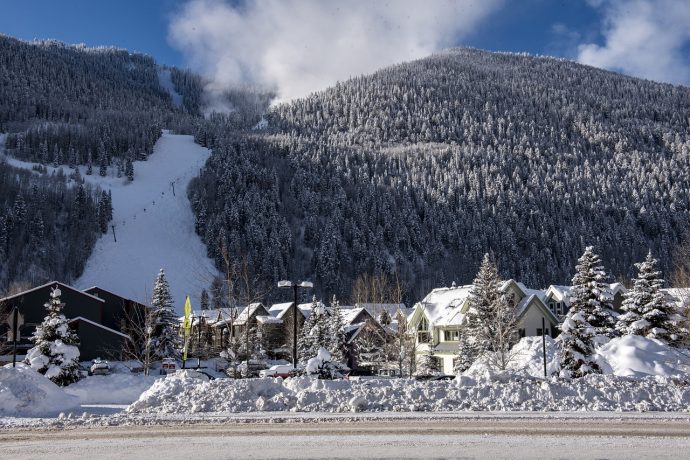
To Rent or Not To Rent
We live in a ski town, hence we have our own snowboards and boots, etc. I mean, we ride at least 5 times per week during the season, it’s my absolute favorite sport. So, when we travel to other resorts, we don’t leave home without our own gear. It’s catered to our specific riding styles, making our own gear more fun, and safer because we know exactly how it responds to every situation. Further, most airlines will allow you to check a ski and snowboard bag as one normal sized bag.
Snowboard bags are an absolute necessity whether you are flying or driving. They protect the skis and snowboards and make carrying them so much easier! Obviously if you don’t have your own equipment, renting is a superb option! KelloggShow Pick: Snowboard Bag, Ski Bag
But, traveling with bulky ski gear, like coats and snowpants increase the sheer volume of what goes into your suitcases – a problem for driving and flying. I highly advise you to check into Arrive Outdoors. This site has everything you need for any trip almost anywhere. For ski trips, you simply order the kit you want online and they ship it straight to your ski resort! After your rental period, simply adhere the included return label to your box and drop it off at any FedEx location. This enables you to fly carry-on (our only way of flying) even for ski trips!
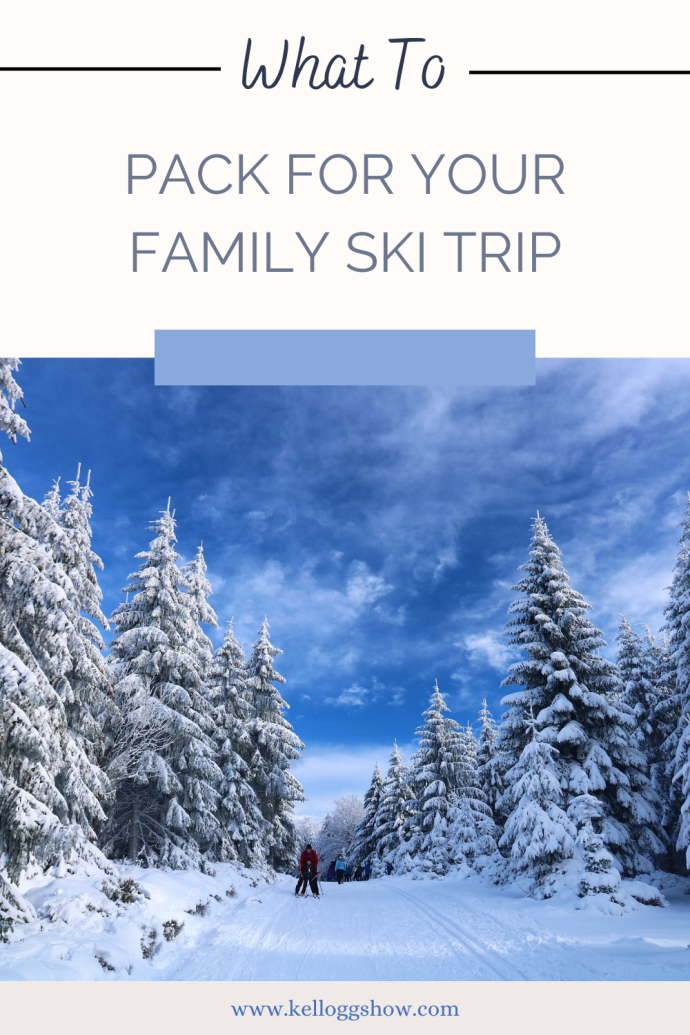

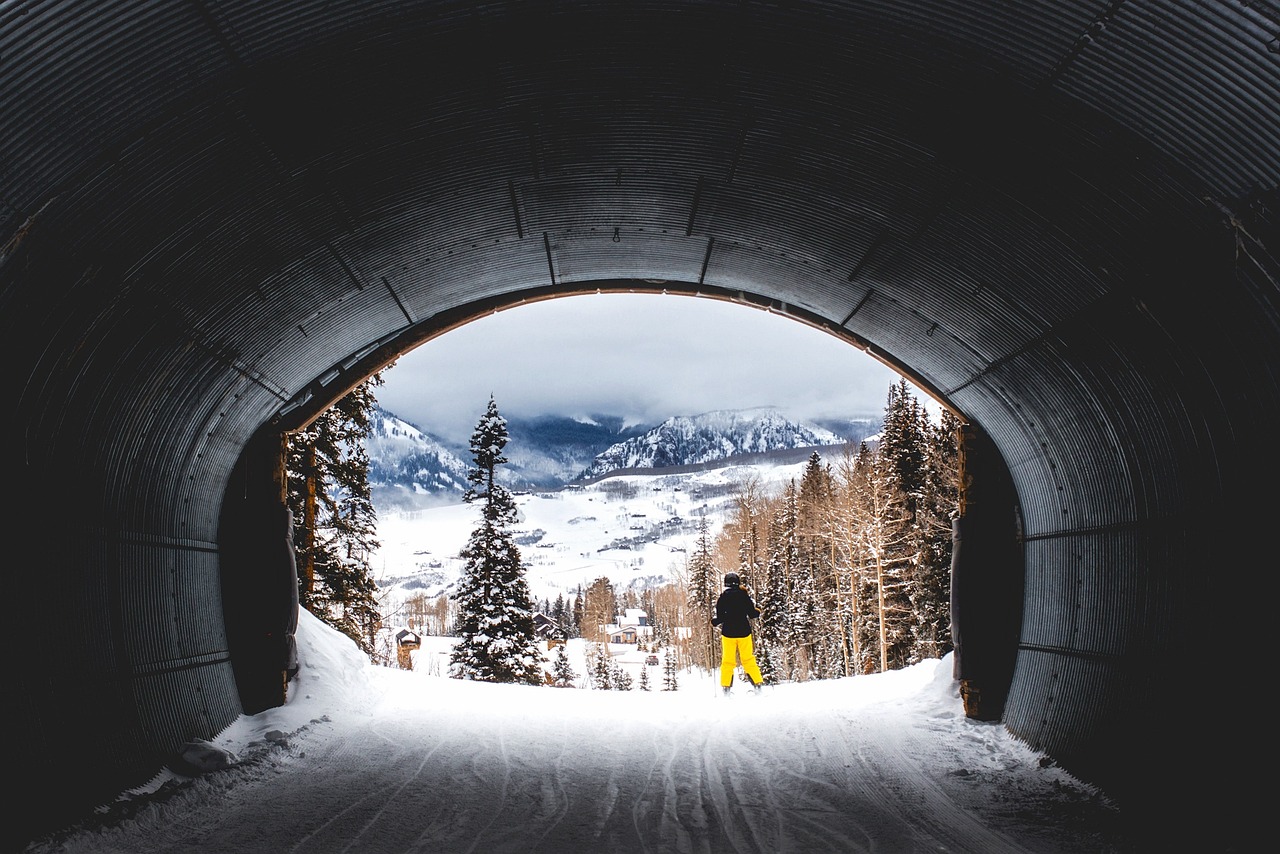
1 thought on “What to Pack for Your Family Ski Trip – The Ultimate Guide”